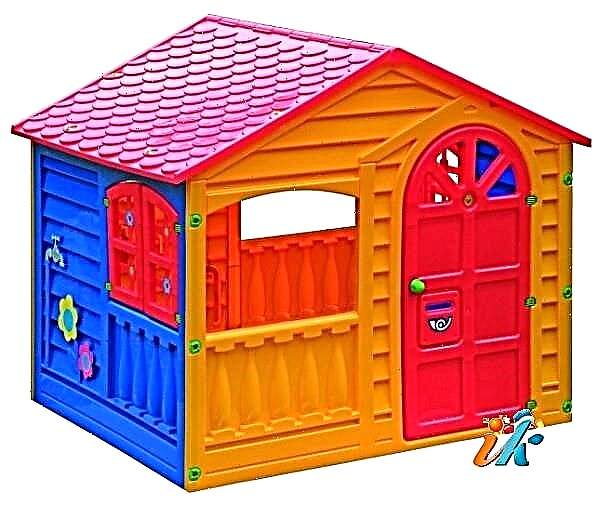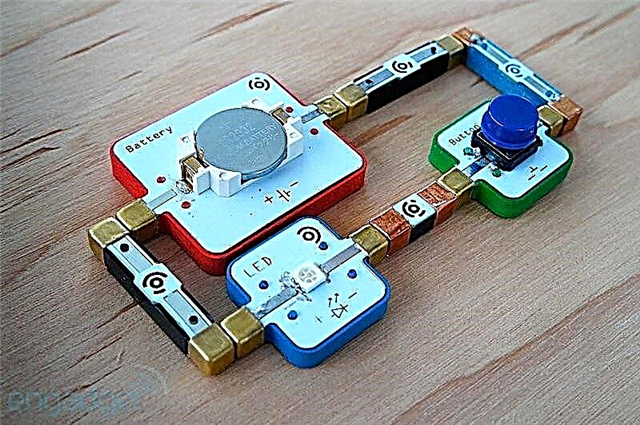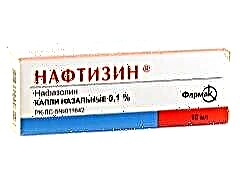
Naphthyzine is one of the popular rhinitis medicines, which is often chosen by adults for its effective action and low cost. But is it worth using such a remedy in the treatment of rhinitis in a child, in what dosage is Naphtizin prescribed for children, and with what analogs can it be replaced?
Release form
Naphtizin is produced by many Russian pharmaceutical companies (Slavyanskaya Apteka, Lecco, Dobromed, Obnovlenie, Sintez, etc.) exclusively in liquid form. The medicine is a slightly colored or colorless solution. It is completely transparent and does not include any suspended particles.
Most manufacturers produce Naphtizin in the form of drops in 10 ml polymer dropper bottles in two dosages - 0.05% and 0.1%. Also in pharmacies there are smaller packages (dropper tubes of 1.3 ml, 2 ml and 5 ml) and larger (15-20 ml bottles). Some pharmaceutical companies also produce Naphtizin in the form of 0.05% or 0.1% spray, packaging the solution of 5-15 ml in plastic spray bottles.
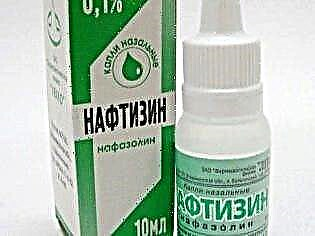
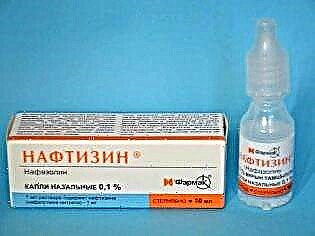
Composition
The main ingredient of Naphthyzine, thanks to which the agent effectively fights nasal congestion, is naphazoline, presented in solution in the form of nitrate. In a 0.05% preparation, it is contained in a dose of 0.5 g per 100 ml. If the concentration of the drug is 0.1%, then the amount of naphazoline in 1 milliliter is 1 mg. Additionally, the solution includes purified water and boric acid.
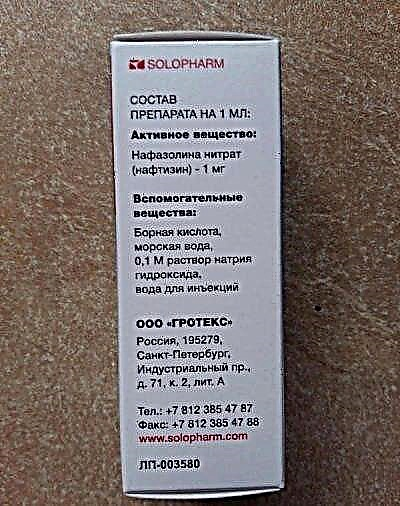
Operating principle
Naphazoline is an alpha-adrenergic agonist, that is, it is able to stimulate alpha-type adrenergic receptors. At the same time, it also acts on alpha-1 receptors, the stimulation of which causes spasm of arterioles, reduces vascular permeability, exudative inflammation, and on alpha-2 receptors, which are responsible for lowering blood pressure.
Getting on the nasal mucosa, naphazoline very quickly and for a long period narrows the vessels, the result of which is the elimination of nasal congestion and a decrease in the amount of discharge in rhinitis. Under the action of the drug, hyperemia and puffiness disappear, due to which breathing through the nose is facilitated or restored. The action of the solution begins within 5 minutes after use and lasts up to 6 hours.

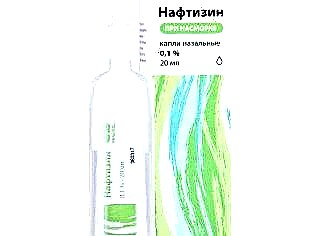
Indications
The medication is used:
- In the acute form of rhinitis caused by a viral infection.
- With hay coryza.
- With laryngitis and laryngeal stenosis.
- With allergic rhinitis.
- With acute eustachitis.
- With nosebleeds.
- When performing rhinoscopy (the drug is dripped before the procedure).
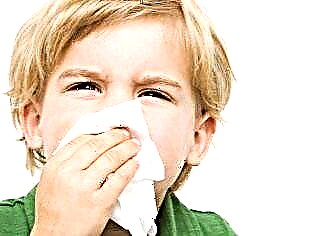
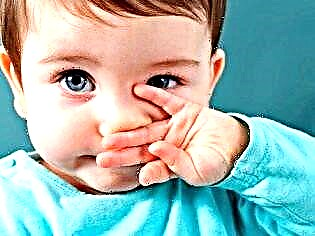
From what age is it used?
Annotation to Naftizin prohibits the treatment of children under the age of one with such a remedy. A child older than a year can be prescribed medication, but most pediatricians prefer treatment of the common cold with more selective adrenomimetics, for example, drugs based on xylometazoline or oxymetazoline.
Before using Naphtizin in children, be sure to consult a doctor.
It is not recommended to drip the product even in a children's dosage (0.05%) without a doctor's prescription. The drug with a concentration of 0.1% is not prescribed for children, since it is contraindicated under the age of 18.
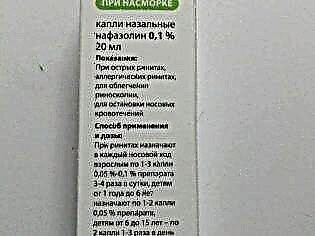
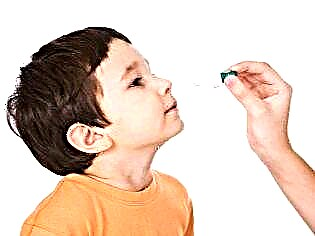
Contraindications
0.05% Naphthyzine should not be used in children:
- With hypersensitivity to naphazoline or boric acid.
- With tachycardia and other disorders of the heart.
- With arterial hypertension.
- With hyperfunction of the thyroid gland.
- With a chronic course of the common cold (the medicine cannot be prescribed for a long time).
- With diabetes.
- With severe eye pathologies.
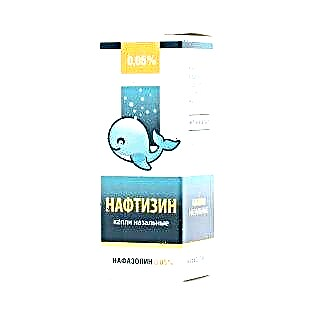
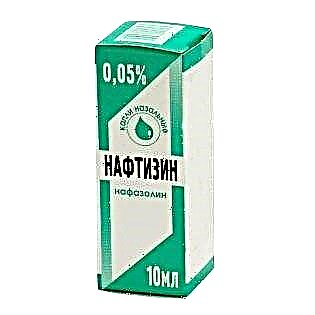
What is dangerous for children?
Be vigilant and pay attention to the following points:
- After using drops irritation of the mucous membrane may appear and other side effects such as headache, nausea, or increased heart rate.
- In Naphtizin, a gradual decrease in the therapeutic effect is noted, which is called tachyphylaxis... This means that in the first days after the instillation of the drug, the vasoconstrictor effect will be more pronounced, and on the third or fourth day the body gets used to it and the reaction of the vessels to the medication weakens.
To avoid this situation, the drug is prescribed only for 3-5 days, and then take a break.
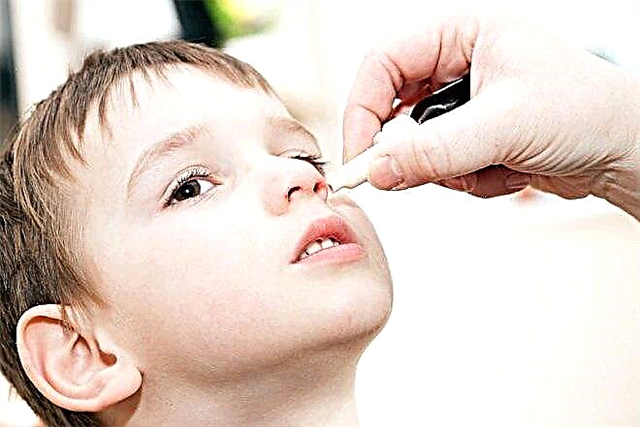
- Long-term treatment with Naphthyzin not only provokes addiction to such a drug, but can also cause swelling of the nasal mucosa or atrophic rhinitis.
- The medicine bottle opens very easily, which increases the risk of solution poisoningif a small child accidentally finds him and drinks the drug.
Addiction
In some patients, the use of the drug can lead to addiction. As soon as the action of naphazoline ceases, the vessels in the nose dilate more than before the introduction of drops / spray into the nose. This is manifested by nasal congestion and the inability to breathe through the nose. Because of this, the drug has to be dripped or sprayed again, so that the vessels narrow again and it becomes easy to breathe, and without the use of the drug, the patient suffers from a completely stuffy nose, which is often joined by headaches.


To get rid of this type of "addiction", you should gradually reduce the dosage of Naphthyzin. This is easy to do if you dilute the drug with saline or water, then drip first half the dose, then a quarter, and then instill only saline or some of the drugs with sea water (Aqua-Maris, Morenazal, Physiomer).
Instructions for use
At the age of 1 to 15 years, only 0.05% Naphthyzine is used in such a single dose:
- For children 1-6 years old - one drop at a time (very rarely, 2 drops drip at once).
- For children 6-15 years old - two drops.
This number of drops is first introduced into one nostril, laying the child on a flat surface and slightly turning his head so that the medication hits the outer wall of the nasal passage. Next, the manipulation is repeated for the second nostril. The frequency of using the drug is 1 to 3 times a day.
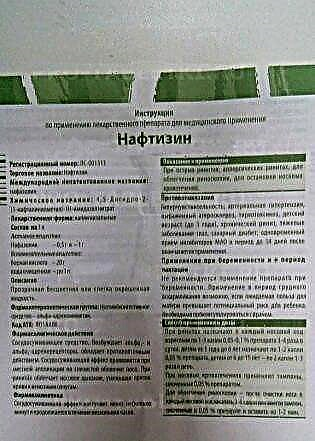
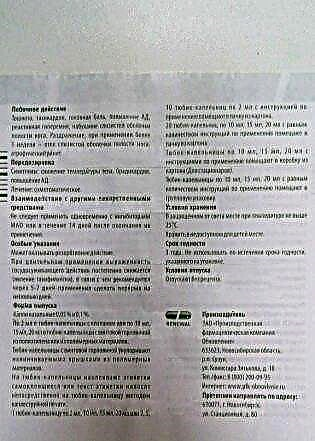
If a 0.05% spray is used, then it is applied 1-3 times a day, injecting the medicine into each nostril with one press. For children under 15 years old, it is often recommended to dilute the solution with distilled water to a concentration of 0.025%.
With tracheitis, obstructive bronchitis, laryngeal stenosis and severe laryngitis, the doctor may prescribe inhalations with Naphthyzin. The procedure is performed using a nebulizer, and the medication at a concentration of 0.05% is mixed in a 1 to 1 ratio with saline. The duration of inhalation should be about three minutes, and the frequency should be 2-3 times a day.
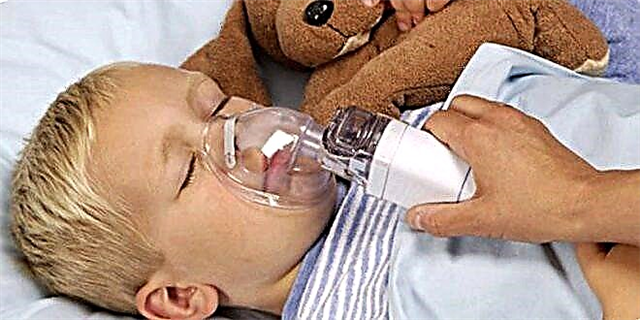
Overdose symptoms
If you exceed the dose of Naphtizin, note:
- Dizziness and drowsiness.
- Increased blood pressure.
- Child refusal to eat.
- The appearance of nausea and abdominal pain.
- Decrease in temperature.
- Decrease in heart rate.
In the treatment of poisoning, symptomatic agents are used, since naphazoline has no antidote. Finding an overdose, you should immediately seek medical help.
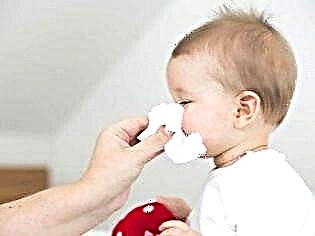
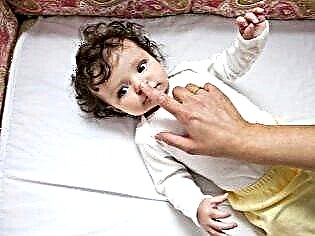
Interaction with other drugs
It is forbidden to use naphthyzine simultaneously with drugs that belong to the group of MAO inhibitors. If Naphthyzinum is used together with local anesthetic agents, their absorption is slowed down, which leads to a longer local anesthetic effect.
You should not drip into the nose Naphthyzin and any other vasoconstrictor drugs (Xymelin, Otrivin, Nazivin), as this will increase the risk of their side effects.
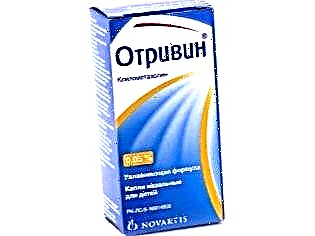
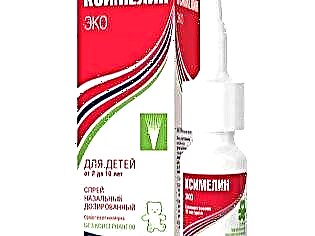
Terms of sale
To buy Naphthyzin in a pharmacy, you do not need to get a prescription from a doctor, but before treating a child, it is strongly recommended that you first show the little patient to an ENT, pediatrician or other specialist. The cost of the drug depends on the volume of the solution in the package and the manufacturer. The price of Naphtizin can range from 5 to 45 rubles.
Storage features
Keep the medication at home at room temperature, preventing it from freezing or overheating. The bottle must be placed in a place where the sun's rays will not act on the solution. It is very important to make sure that the storage site of Naphthyzin is not accessible to small children in order to prevent an overdose of such a medicine.
The shelf life of the drug is usually 3 years and is marked on the package. It is unacceptable to use an expired solution for treating children.


After opening, no special conditions are required, but the shelf life is reduced to 28-30 days.
Reviews
About the treatment of children with Naphthyzinum speak differently. The medicine is called affordable and cheap, so it is often used for a cold. According to mothers, the drug works very effectively and quickly helps to eliminate the symptoms of rhinitis for 4-6 hours.
However, such a short-lived effect is also attributed to the disadvantages of the medication. Because of it, parents often give preference to other vasoconstrictor drugs that eliminate nasal congestion for up to 12 hours. In addition, many reviews complain about the gradual addiction to Naphthyzine, which is manifested by a decrease in effectiveness after several days of treatment.
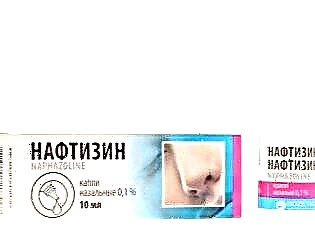
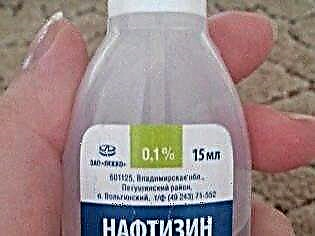
Among the disadvantages of Naphtizin, its packaging is also noted. Parents say that it is inconvenient to drip the medicine from the bottle (you have to draw it separately with a pipette), and this medicine has no protection from children, which poses a danger of overdose. But the use of medication in the form of inhalations is generally responded well, noting that with exacerbation of bronchitis and laryngitis, procedures help to get rid of coughing fits and prevent stenosis.
Analogs
In the treatment of rhinitis in children, instead of Naphtizin, they often use:
- Galazolin. This gel and nasal drops contains xylometazoline. Medication in liquid form is used in childhood from 2 years (0.05%) and from 6 years (0.1%), and the gel is allowed from 3 years (0.05%) and 12 years (0.1%) ...
- Xilen. This product also includes xylometazoline and comes in drops and spray. At a concentration of 0.05%, it is prescribed for babies 2-6 years old, and a 0.1% solution is prescribed for a child over six years old.
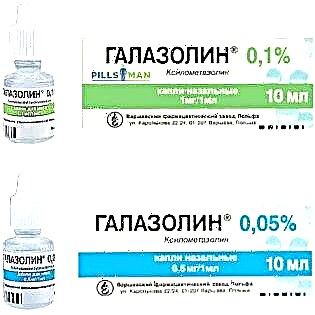
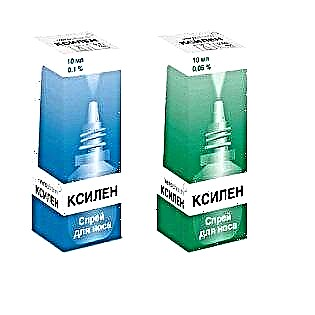
- Sanorin. The action of such drops is ensured, as in Naphthyzin, with naphazoline nitrate. At a concentration of 0.05%, it is prescribed from 2 years of age, and a 0.1% solution is prescribed from 15 years. The drug is also produced in the form of a 0.1% spray, approved from the age of 15.
- Nazivin. Such a medicine containing oxymetazoline is released in drops and spray with different dosages, so the medicine is used at different ages (even in infants).
- Nazol Baby. Such nasal drops contain phenylephrine and are used at any age, but for babies under 6 years of age they are dripped with caution and only after a doctor's prescription. For children over 4 years old, Nazol Kids spray is available, which also contains phenylephrine, but in a higher dosage.
In addition to drugs that act on alpha-adrenergic receptors, children with rhinitis are prescribed medications based on seawater, antiseptics (for example, Miramistin), oil drops (for example, Pinosol), antibacterial drugs in the nose and other medications. However, their use, as well as treatment with vasoconstrictor drugs, must be agreed with the doctor.
For information on when vasoconstrictor drops are needed, see the next video.


